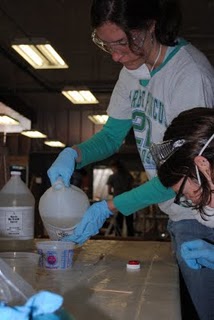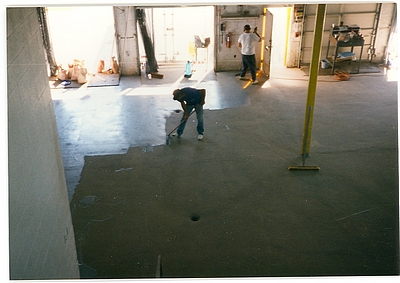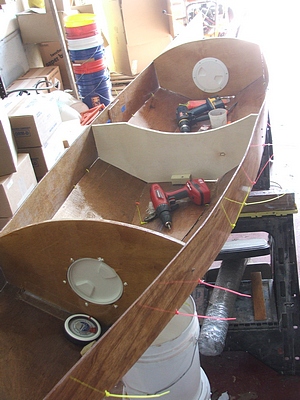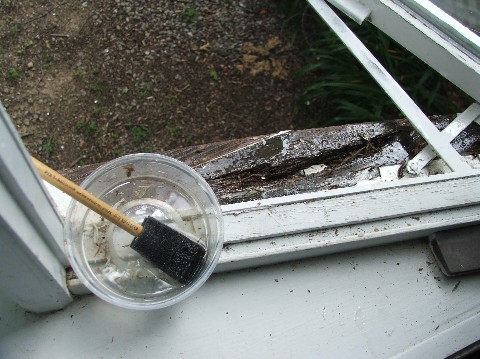
00

EPOXY QUICK FIND LINKS - COMPREHENSIVE
EPOXY RESOURCE WEB SITES - CLICK HERE
Epoxy Paints come in lots of 'flavors.' The purpose of this page is to get you up to speed about epoxy paints and to compare the different epoxy paints ( marine epoxy, apply underwater resins , two part putties, fillers, etc.).
Epoxies for all applications garage, floor, boat/marine, home repair, pipe and leak fixing

located in Tax Free New Hampshire
MEMBER: Internet Epoxy Confederation (IEC - CLICK HERE TO VISIT) -- "Where Professionalism Still Matters"
|
Internet Epoxy Confederation (IEC) Your connection to SAFE, DEPENDABLE, EXPERT epoxy web sites, vendors, products, links VISIT IEC NOW at Epoxyfacts.com
|
Search the EPOXY-ONLY World Wide Web search engine
for your Epoxy Related Search term
CLICK HERE FOR EPOXY RELATED SEARCHES
This website is a small, topic specific, sub-website of our
large primary everything site: EPOXYPRODUCTS.COM
Visit one of our other sub-website pages: everything-epoxy.com
BROWSE WORRY FREE This site is SSL protected/secured
Explore over 80 internet epoxy web sites CLICK HERE to view
epoxy applications, epoxy online stores, how-to articles
| Homepage | Epoxy Paint | Garage Coatings | Epoxy Resin Systems | Clear Marine Epoxy | Questions and Help |

Wikipedia - defines epoxy as:
Epoxy is both the basic component and the cured end product of epoxy resins, as well as a colloquial name for the epoxide functional group.
Epoxy resins, also known as polyepoxides are a class of reactive prepolymers and polymers which contain epoxide groups.
Epoxy resins may be reacted (cross-linked) either with themselves through catalytic homopolymerisation, or with a wide
range of co-reactants including polyfunctional amines, acids (and acid anhydrides), phenols, alcohols, and thiols. These
co-reactants are often referred to as hardeners or curatives, and the cross-linking reaction is commonly referred to as
curing. Reaction of polyepoxides with themselves or with polyfunctional hardeners forms a thermosettingpolymer,
often with strong mechanical properties as well as high temperature and chemical resistance. Epoxy has a wide range
of applications, including metal coatings, use in electronics / electrical components, high tension electrical insulators,
fiber-reinforced plastic materials, and structural adhesives. Epoxy resin is employed to bind gutta percha in some root canal procedures. [1]
NEW TO EPOXY? Learn about the major 2-part epoxy product groups -
Everything-Epoxy.info (primary site) - Click Here (secondary site)
Epoxy Paints come in lots of 'flavors.' The purpose of this page is to get you up to speed about epoxy paints and to compare the different epoxy paints ( marine epoxies, underwater epoxies, epoxy putties, fillers, etc.).
What separates general purpose epoxy paints (and non-epoxy paints) for epoxy and non-epoxy floor paints, plain
marine epoxy, or even water, is their thixotrophic properties. The term has to do with internal gelling of the
paint. Thixotrophic additives, such as fumed silica, give the coating the ability to 'gel' after application. This
means when applied to a vertical surface, such as a wall, the coating will be as thick at the top of the wall as
it is at the bottom of the wall. Regular marine epoxy, floor paints/epoxies, and water, are non-thixotrophic and
if applied to a wall would tend to flow or slump to the bottom of the wall, leaving very little of the coating
near the top of the wall.
Epoxy paints are used for marine barrier coats, equipment
coating, pipelines, tanks and sumps, wastewater applications, etc.. The advantages of epoxy paints is that they
can handle full time immersion, strong chemicals, and are very impermeable as well as tough. Many are solvent free
so wet thickness will equal dry thickness (cracks will not reappear as the epoxy cures) and they are nearly odorless.
Some can even be applied underwater. The disadvantages of epoxies are that they tend to be brittle, quickly yellow
in sunlight (white becomes a creamy color, light blue becomes light green, etc.) and lose their shine in sunlight.
The yellowing and loss of gloss (even chalking in some cases) is due to the affect of UV on ALL epoxies (some epoxies
will yellow in days, others take weeks but they all do eventually).

The major differences between
the different epoxy paints are:
Color - in large volumes (15 - 60 gallons depending upon the formulator) custom colors are usually available - but remember that epoxies yellow. Generally our epoxy paints are available only in one color, which varies from product to product.

Viscosity/fillers - solvent free epoxies tend to be somewhat thick, but all the epoxies considered here are rollable or brushable. Some are thinner than others making them slightly easier to brush or spray apply. Corro CoatFC 2100 epoxy paint, for example, contains both Kevlar (tm) micro fibers and feldspar ceramic which complicates things if the product is to be spray applied. Generally many of these products can be applied at up to about 15-20. Note that at 16 mils coverage is 100 square feet per gallon - at 8 mils it is 200 square feet per gallon.
Pot life - the amount
of time after the two epoxy components are combined that they can be used before they begin to harden. Pot life
is greatly affected by temperature (doubling or halving every 18 degrees F or 10 degrees C) and by the amount and
concentration of the epoxy. 12 ounces of epoxy in a cup will have a much shorter pot life than 12 ounces spread
out on a floor or 3 ounces of epoxy in a cup. In really hot weather an epoxy with a long pot life may be necessary
because an epoxy with a more 'normal' pot life may not provide enough working time (perhaps only 10 minutes or
so). In cold conditions a 'fast' or short life epoxy may be necessary because the cold conditions will greatly
slow down the epoxy reaction and stretch out the pot life considerably.

Price - this is self
explanatory.
Shipping Restrictions
- Most epoxies (actually just the curing agent - part B), and all products containing solvents are considered hazmat
to ship. Generally these products can be shipped 'ground' without problem or special charges, but they are nearly
impossible (or too expensive) to ship, especially in small amounts, by air or outside the USA. If you need air
shipment or live outside the USA consider only the non hazmat classified coatings.
 |
Google Epoxy Specific Search |
| BIG list of internet links for: FLOOR EPOXY PAINTS - GARAGE FLOOR COATINGS BIG list of internet links for: EPOXY BOAT BUILDING - REPAIR - MARINE EPOXIES - BLISTER FIXES - BARRIER COATS BIG list of internet links for: EPOXY REPAIRS - ROT - LEAKS - PIPE REPAIR - UNDERWATER REPAIRS BIG list of internet links for: EPOXY BASICS - GETTING STARTED WITH EPOXIES - EPOXY 101
|
need to learn more about epoxies??
--- visit these third party sites ---
(EVERYTHING-EPOXY.INFO --- Intro to basic epoxy resin types)
also visit the EPOXY GURU
DID YOU KNOW...
Epoxy coatings are used because of their
outstanding chemical resistance, durability, low porosity and strong bond
strength.
Epoxies consist of a ‘base' and a ‘curing'
agent. The two components are mixed in a certain ratio. A chemical reaction
occurs between the two parts generating heat (exotherm) and hardening the
mixture into an inert, hard ‘plastic'.
Epoxies yellow, chalk (or more commonly least lose their gloss), in direct
sunlight (UV). The yellowing can be a real problem. For pigmented epoxies
select colors that are dark or contain a lot of yellow (such as green). Even
clear epoxies will yellow and cloud up. Often epoxies are top coated with
latex or urethanes that will retain their color and attractive gloss. This
is particularly true if color coding or matching company colors is
important.
Epoxies will harden in minutes or hours, but complete cure (hardening) will
generally take several days. Most epoxies will be suitably hard within a day
or so, but may require more time to harden before the coating can be sanded.
By their nature, epoxies are hard and brittle. Additives can be added to
epoxies that make them less brittle, but generally at the loss or reduction
of other positive epoxy properties such as chemical resistance.
Other clues of cheap epoxies include ‘induction time' (after mixing the two
components the mixture must sit for several minutes to ‘self cook' before
being applied).
The best time to recoat epoxy is within about 48 hours after the initial
coat. Because epoxies take days to reach full cure, a second coat applied
shortly after the first coat will partially fuse to the first coat rather
than forming a simple mechanical bond.
End users can thicken epoxy with many things, Tiny glass spheres, known as
micro-spheres or micro-balloons are commonly used. Besides thickening, their
crushable nature makes sanding the hardened epoxy easier. On the downside,
they work like tiny ball bearings, resulting is sagging and slumping.
Another thickener is fumed silica (a common brand name is Cabosil (tm))
which looks like fake snow. About 2 parts fumed silica with one part epoxy
will produce a mixture similar in texture and thickness to petroleum jelly.
Micro-spheres and fumed silica can be combined together.
Fisheyes are areas on a painted surface where the coating literally pulls
away for the substrate leaving a coatingless void or fisheye. Often fisheyes
are caused by surface contaminants such as a bit of silicon, wax, or oil. I
have also seen them on clean plywood where epoxies paints have been used as
sealers and the problem might be due to uneven saturation (soaking-in) of
the epoxy into the wood. Surface tension plays a big part in fisheyeing.
There are some additives that can be mixed into the epoxy that will reduce
surface tension. Likewise, on wood, applying several coats of solvent
thinned epoxy, instead of one coat of unthinned epoxy, seems to work well.
Applying a thick coat of epoxy over a contaminated fisheye surface will bury
the fisheye but expect the coating to peel away in the future. As a rule of
thumb, always suspect some sort of surface contamination as the primary
cause of fisheyeing.
Adding a bit of solvent to a solvent based or solvent-free epoxy is
something that most manufacturers would not officially approve of and
something that might not work with all epoxies. However, it can be done
(unofficially) with the epoxies I deal with. Adding solvent to these epoxies
will: 1) thin them out; 2) increase pot life; 3) allows them to flow off the
brush/roller a bit more smoothly; and 4) perhaps allows them to ‘soak-in',
penetrate, or may be soften, the substrate just a little bit. Not change is
visible in the epoxy unless 12% or greater solvent is added. With that
amount of solvent, the epoxies no longer cure with a glossy finish.
It is best to use epoxies with a mix ratio close to 1 to 1 as opposed to
something 4-1, 5-1, etc. because errors in the mix ratios can be more
pronounced with the latter. That said, no matter what the mix ratio is, some
epoxies are more forgiving of mix ratio errors than others. One ‘trick' of
epoxy vendors with odd or very sensitive mix ratios is to sell calibrated
pumps that disperse the epoxy components in exact amounts.
How Thick? How thick should your coating be? Economics play a major role in determining how much coating to apply. One U.S. gallon contains 231 cubic inches. That's only 1.6 cubic square feet of surface at one inch thick and that's also assuming a solvent-free product. If the product is 25% VOC (i.e. 25% solvent) then dry thickness/coverage will be 25% less. Again, assuming a 1/4 inch thick coating (250 mils) maximum coverage will still be only 6.4 square feet per gallon. A solvent-free (100% solids) epoxy coating applied at 16 mils will cover 100 square feet per gallon (note: the wall paint in your office is probably 2-4 mils). While thick coatings sound like a good idea, they use so much product that they must be made very cheaply so that coating 1,000 or 10,000 square feet can still be done at a competitive price. A high quality, fairly expensive product with a coverage rate of 100 sq. feet or more per gallon, on the other hand, will have a low enough cost per sq. foot to provide both economy and top quality.
| Homepage | Epoxy Paint | Garage Coatings | Epoxy Resin Systems | Clear Marine Epoxy | Questions and Help |

|
|
Links to Lots of MUST READ Information Articles About the Best Epoxy Floor Paints, Including Preparation, Alternatives, What Can Go Wrong, etc.
|
|
Bio Vee Seal - INTERNAL CONCRETE SEALER |
SOME OF THE SITES THE ABOVE LINK WILL DIRECT YOU TO |
|
Clear Top Coats - FLOOR CLEAR TOP |
Best Floor Epoxy - CLICK HERE |
|
Epoxy Quartz Floor - BROADCAST FLOOR |
Acid Etching - ACID |
|
Epoxy Paint Chip Floor - CHIPS |
Epoxy Paint vs. Floor Epoxy Paint - EPOXY PAINTS |
|
Epoxy Paint - SURFACE PREP |
Floor Basics/Options - START HERE |
|
Floor Epoxy - CATALOG PAGE |
Questions: ASK PROFESSOR E. POXY |
Site Co-Sponsor -
PEP .
Search the EPOXY-ONLY World Wide Web search engine
for your Epoxy Related Search term
CLICK HERE FOR EPOXY RELATED SEARCHES
Sponsor Links:
the "Epoxy Guru"
Paul Oman - MS. MBA
A.K.A. “Professor E. Poxy” -- "The Old Goat" -- "Epoxy Guru"
epoxies since 1994
Member: NACE (National Assoc. of Corrosion Engineers)
SSPC (Soc. of Protective Coatings)
Email The Epoxy Guru, or call him to talk or purchase products mentioned:
Call
603 435 7199 anytime
Sponsor Links:
please support our sponsors!
|
ONLINE PRODUCT CATALOGS PROGRESSIVE EPOXY POLYMERS, Inc |
|
|
ONLINE STORE Purchase Here ------ or CALL 603 435 7199 ------ HOME PAGE |
|
|
Marine Catalog |
|
*
home
page of marine catalog section (blue background)
|
|
|
Section One
MARINE - CLEAR EPOXIES
Section Two FILLERS THICKENERS ADDITIVES
|
|
|
MASSIVE BOAT HOW TO - ISSUES - HELP WEB LINK SITE |
|
|
Residential / Commercial / DIY Catalog |
|
*
home
page of residential/commercial catalog section (brown background)
|
|
|
Section A
EPOXY PAINTS
|
|
|
WEB
EPOXY
FLOOR ISSUES LINKS SITE --- WEB EPOXY REPAIR LINKS SITE |
|
|
-------
BY SUBJECT
INDEX HELP SITE |
|
|
top selling favorite products for your every need Buy Talk Chat Support EMAIL or 603 435 7199 American manufactured, distributed, and sold epoxies and coatings. Your business helps small American Family Businesses - Thank You! |
(QUESTIONS, ORDERS, ETC. WE CHECK EMAILS MULTIPLE TIMES EACH DAY AND ON WEEKENDS/HOLIDAYS)
Need More?
Ask the EPOXY GURU
Ask Professor E.Poxy
|
Let's stay connected. It's a win-win situation. Receive our online NEWSLETTER by emailing us your name and email address. |
NOTICE: Legal notices, Terms of Service, warranty information, disclaimers, health warnings, etc. are required reading before using web site, ordering and/or using Products. Any such use and/or ordering, online or by telephone, shall constitute acceptance and knowledge of all such terms.
CLICK HERE to access these terms. Please note: Whenever you purchase from this web site, and with each new purchase, you are granting us full and complete permission to add you to our email newsletter list at our option.
RETURNS: call or email for authorization to return. Returns are subject to a 25% restock fee. Customer pays return shipping and must comply with federal DOT shipping requirement/labeling for hazmat epoxies under penalty of fines and legal action.
###
